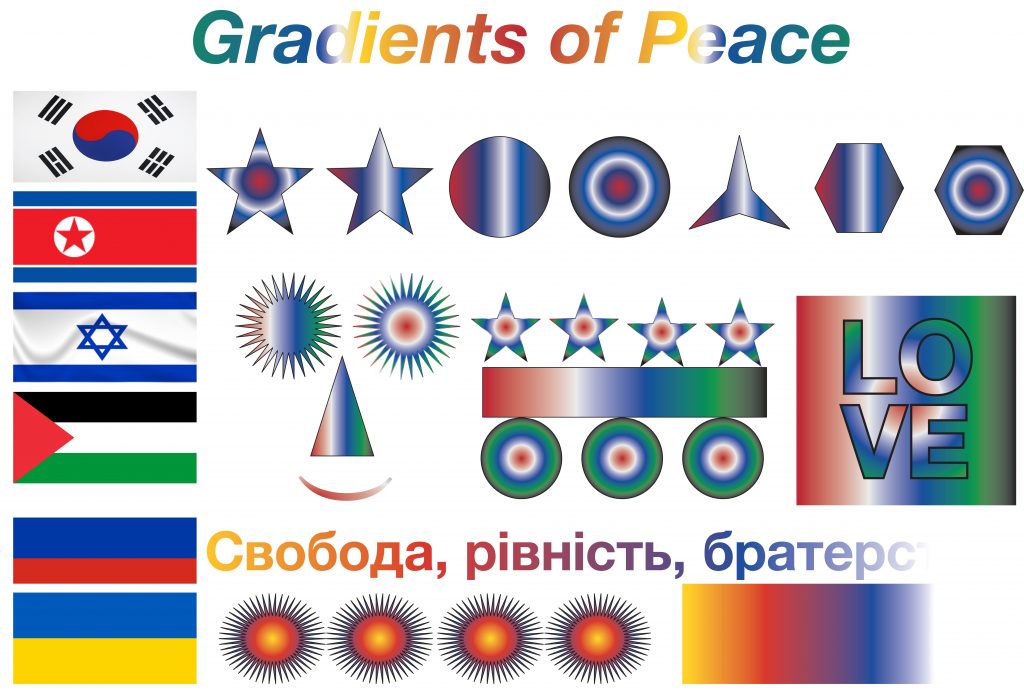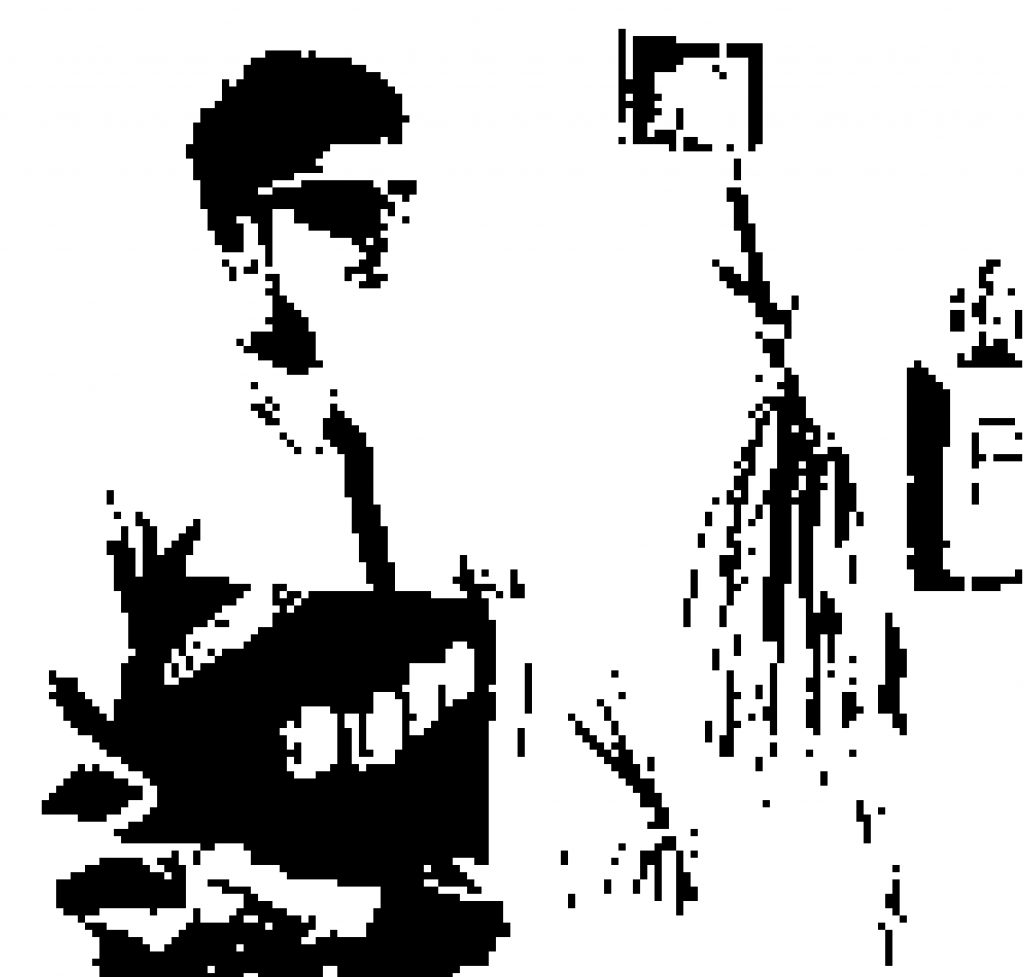Gradient by gradient we hope peace will come.
This creative exercise named ‘Gradients of Peace’ (Fig. 1) consists of examining wars and conflicts by blending, positioning and shaping gradients created with the flags’ colours of countries involved in hot or cold feuds (e.g. Palestine and Israel, Russia and Ukraine; Taiwan and China; North and South Korea, etc. ).
This exercise has been developed within the Adobe Certified Course in Photoshop and/or InDesign I deliver at the London College of Fashion.

This idea of inserting political concepts in my short and intense courses has also been boosted when in July 2024 I visited an exhibition staged at the White Chapel Gallery in London called ‘Peter Kennard – Archive of Dissent’. Peter Kennard is a London-based artist, activist, and Eremitus professor of Political Art at the Royal College of Art. Since the 1970s, Kennard has produced some of our most iconic and influential images of resistance and dissent (Fig. 3).

“My art erupts from the outrage of the fact that the search of financial profit rules every nook and cranny of our society. Profit masks poverty, racism, war, climate catastrophe and so on and on. My aim is to unmask the connection” (Kennard, 2024).
By applying and associating the gradient tool with contemporary appalling realities, students became more confident in thinking that they are the designers of their present and future and possess all the tools to embellish it by envisaging reconciliation and peace through the colourful harmony of a gradient.
To paraphrase Dr John O’Reailly Senior lecture in Academic Practice at the University of the Arts London and also my former teacher when I was studying my MA Innovation Management at Central Saint Martins, we must contribute to designing a brighter future in the higher educational apparatus where teachers and professors distance themselves from the practice of pedagogy, and I would also add, by eliminating the dichotomy between masters and pupils and becoming all technicians where knowledge and expertise are constantly exchanged without filters as the founder of the Bauhaus Walter Gropius envisioned at the beginning of the 20th century.
REFERENCES
O’Reilly, J. (2023). ‘See you on the other side’: researcher identity, threshold concepts and making a ritual of confirmation. Spark: UAL Creative Teaching and Learning Journal, [online] 6(1), pp.10–22. Available at: https://sparkjournal.arts.ac.uk/index.php/spark/article/view/175 [Accessed 3 Jan. 2025].
Whitechapelgallery.org. (2024). Available at https://www.whitechapelgallery.org/exhibitions/peter-kennard-archive-of-dissent/.
Whitford, F. (1985). Bauhaus. London: Thames And Hudson.

Leave a Reply